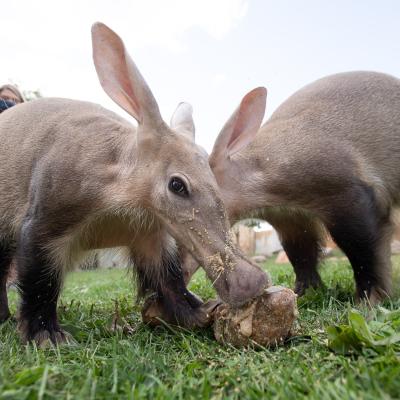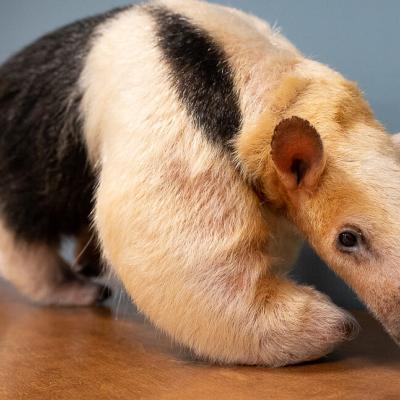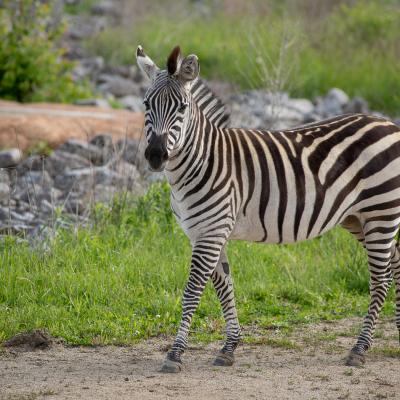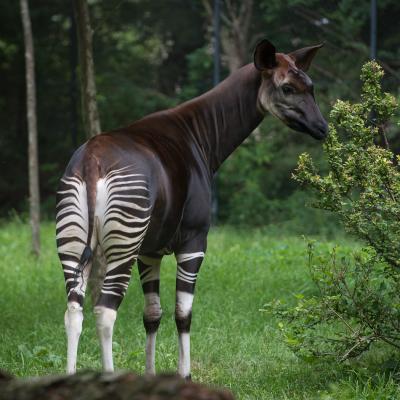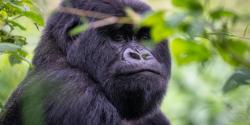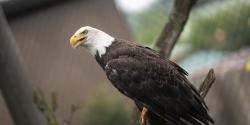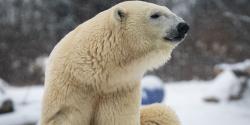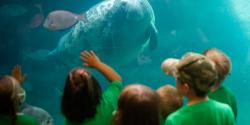Animal facts provided by Audra Meinelt and Kaylee Franklin.
Our planet is home to millions of species of animals. While walking around the Columbus Zoo and Aquarium, you may encounter animals that look or act similar (or remind you of another local wildlife species) but are different and have no relation to one another.
In our second post about these similarities and differences, we shared information about echidnas and porcupines, and lizards and salamanders.
For Volume III of these fun facts, we are featuring tamanduas and aardvarks, and okapis and zebras!
Tamandua vs. Aardvark

The tamandua is in the Myrmecophagidae animal family. Northern tamanduas are found in Central and South America, including Mexico, Venezuela, and Peru, and southern tamanduas are found in South America, including Venezuela, Trinidad, Argentina, Brazil, and Uruguay. The Columbus Zoo is home to southern tamanduas.
The average weight for a tamandua is 10 pounds. Tamanduas have a 16-inch long skinny, sticky tongue that helps them collect food. Tamanduas also secrete a smelly scent that earned it the nickname the “stinker of the forest.” The tamandua’s foul smell is said to be four times more potent than a skunk’s.
The aardvark is in the Orycteropodidae animal family. The aardvark is found throughout sub-Saharan Africa where they occupy grassland and savanna habitats. At the Columbus Zoo, two aardvarks named Kiazi and Arthur live in our Heart of Africa region and can be seen near the Watering Hole. The aardvark’s closest living relatives are elephants and manatees.
Aardvarks weigh between 90-220 pounds. The aardvark has a 12-inch tongue that helps it reach insects. In their native range, aardvarks will eat up to 50,000 ants every night. In less than one minute, an aardvark can dig a hole deep enough to fit in.
Similarly, both aardvarks and tamanduas eat termites and ants as part of their diet. Aardvarks and tamanduas have long nails for reaching their food source–tamanduas use their nails to pull bark off trees to eat the bugs underneath, and aardvarks use their nails to dig in the ground to find their food. They also both give birth to only one offspring at a time.
Okapi vs. Zebra

The okapi is an endangered species and belongs to the Giraffidae family. The okapi is only found in the Democratic Republic of Congo (DRC) in Africa and is also the only living relative of the giraffe.
Okapis have long prehensile tongues measuring around 13-14 inches. In their native range, okapis eat 40-65 pounds of leaves, twigs, and fruits daily.
One of the okapi’s most unique features is its ability to communicate using infrasonic vocalizations. These sounds are low frequency and cannot be heard by our human ears.
The zebra is in the Equidae animal family. There are three living species of zebra (Grévy’s, mountain, and plains). Grévy’s zebras are found in northern Kenya and southern Ethiopia, mountain zebras are found in South Africa, and plains zebras are found in Eastern and Southern Africa. The Grévy’s zebra is the largest and most endangered species due to habitat loss and competition with livestock.
Zebras are herbivores that primarily eat grass, but they will also eat browse (leaves, shoots, and twigs). Zebras communicate with facial expressions and sounds. Zebras often stand together with their heads resting on each other’s shoulders.
Zebras have white coats with black stripes. These stripes are used to identify individuals within a herd, act as a bug and sun repellent, and no two zebras have the same stripe pattern.
The stripes on the okapi’s hindquarters and front legs remind people of a zebra’s stripes. Both zebras and okapis will give birth to one offspring at a time. Okapis are solitary and secretive animals, while zebras are more social and live in herds.
The next time you visit the Columbus Zoo, challenge yourself to discover other animal species that look or act similar but are not related!

